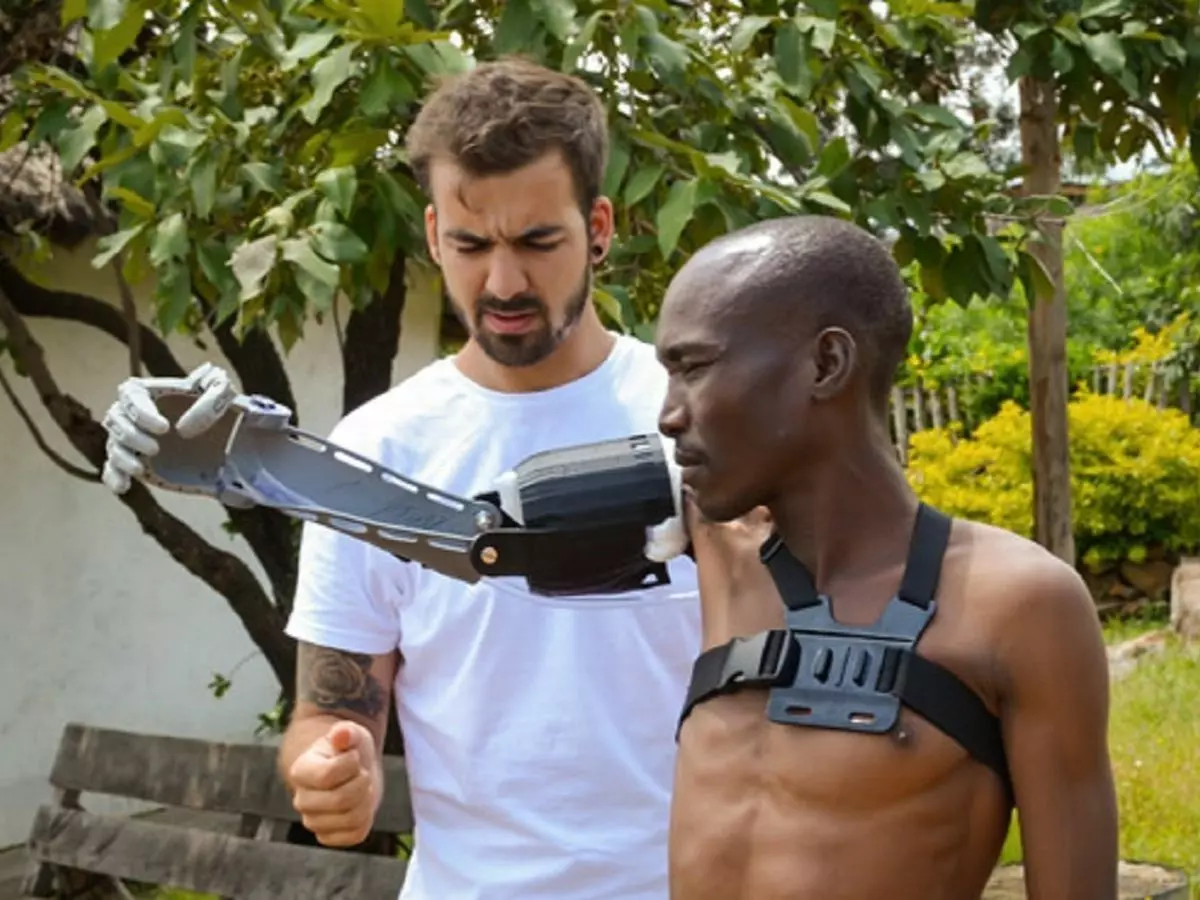This 24-Year-Old Engineer Builds Free 3D Printed Prosthetics For Orphans And Poor In Kenya
Industrial designer Guillermo Martinez says he¡¯s always been curious about 3D printing. He eventually bought his own 3D printer back in 2017 and began experimenting by following YouTube tutorials. But he never imagined where his journey would go.

Industrial designer Guillermo Martinez says he's always been curious about 3D printing.
He eventually bought his own 3D printer back in 2017 and began experimenting by following YouTube tutorials. But he never imagined where his journey would take him.

Images courtesy: Ayadume 3D
Martinez, now 24, worked at a toy shop in Madrid at the time. And everyday after closing up at 6pm, he would go home and tinker with designs for various robots and other projects. But one day, he came across a design for a 3D-printed prosthetic hand.
"I learnt how to build robots by watching YouTube tutorials and at university, but the turning point was when I started building parts to assemble bigger things," he told Business Insider.
"One day I found the prototype for a one-hand prosthesis on the Internet, and I started putting it together in ways that made me laugh - with the thumb up, twisted round, giving the middle finger," he says. And those little inside jokes were just the beginning.
Eventually, he graduated to building entire 3D-printed prostheses for fun. It was then that Martinez wondered whether he could put his hobby to use where it was needed the most. At the time, he was already supposed to go to Kenya on a trip, so he contacted an NGO named Bamba Project to see if anyone in the poor country could use cheap prosthetics.
It turned out, a lot of them really needed it.

By the next morning, he already had six WhatsApps asking if he could build prostheses, from people all over Kenya.
Of course, making prosthetics for people in Kenya wasn't so easy. It's one of the poorest countries in the world. For one thing, it wasn't easy at all getting the materials for 3D-printing there.
"I'd always considered making prostheses in Kenya - or somewhere else where I'd volunteered," Martinez said, "but when I went there, I realised it just wasn't viable. I would have to spend a lot more time there to train someone in 3D printing, and the materials used to make the prostheses aren't easy to find there - not to mention the fact that, in Kenya, there are power outages all the time."
Instead, Martinez had to get creative. He began developing prosthetic limbs made of plastic, using high-tension wires and rubber bands for movement. The finished product had a hand that allowed wearers to grab and lift objects up to 10kg. All of these materials are fairly easy to get a hold of in Kenya. An added bonus is that, because they're not expensive resources, the whole prosthetic limb costs only about $50 to manufacture.

The biggest advantage? The prostheses only cost $50 each
"I went there, tested out the prostheses, and saw that people were getting to grips with it quickly after using it," he said. "It felt great. I considered stopping there, but I loved the feeling of being able to help others so much that I decided to start Ayu?dame3D."
Martinez then launched a website for his project and began asking people around the world for crowdfunding to achieve his dream. Eventually, thanks to some helpful media coverage and even more handy donations, he was able to get some momentum. As of now, he's delivered 50 prostheses to poor countries all over the world. So of course the next step is to grow the company to a global network that can provide the service to a wider population and for cheaper.
In addition, Martinez has also begun teaching in schools in these countries, introducing young kids to 3D printing and showing them the ropes. That way, they can gain proficiency with it early on, and perhaps even go further than he has.

For his efforts, Martinez has even earned the World Youth Forum award. "The day before, they told me that they were going to give me a prize and I was so shocked. This is the sort of thing that's propelled me to carry on, because I can see people have faith in it,"he said.
